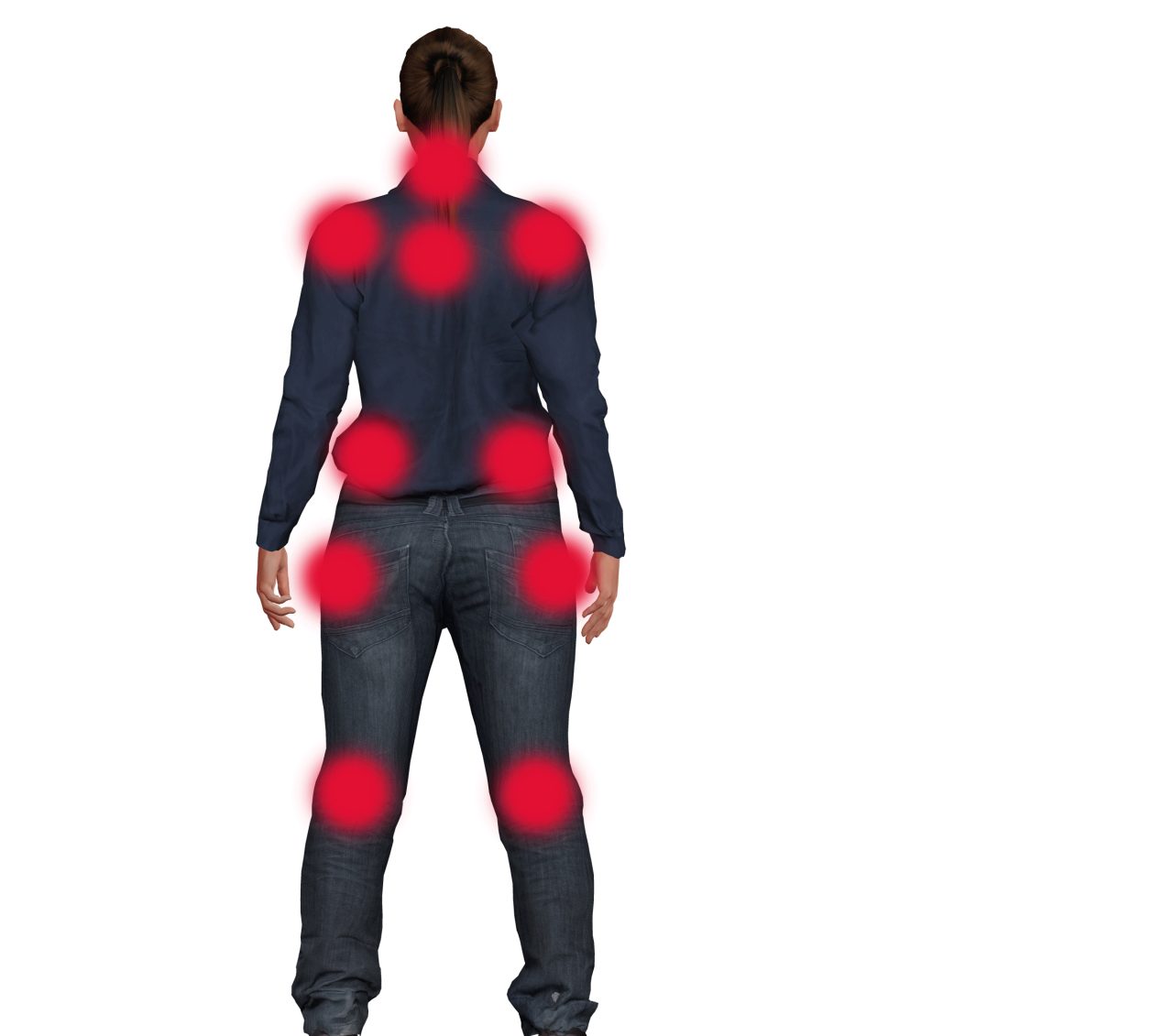Fibromyalgia Trigger Points

When you have fibromyalgia, you have chronic pain in your muscles, tendons, and connective tissues. Doctors call fibromyalgia trigger points tender points.
Fibromyalgia is most likely a disorder in the central nervous system that makes people experience pain from stimuli that normally wouldn't be painful.
When you have fibromyalgia, you have chronic pain in your muscles, tendons, and connective tissues. Unlike arthritis, fibromyalgia does not damage your joints. The pain often follows a big stress like a car accident or serious infection.
YOU MIGHT ALSO LIKE: What Is Fibromyalgia?
What are fibromyalgia trigger points?
For a decade, from 1990 to 2010, rheumatologists diagnosed fibromyalgia with a “tender points test” — checking for pain under a patient’s skin. You might qualify if you felt pain when your doctor pressed at least 11 of the 18 fibromyalgia pain points, all near joints — and you had generalized pain. People sometimes mistakenly call spots of pain fibromyalgia trigger points. Fibromyalgia trigger points are different. They stimulate pain in other parts of your body.
Some people didn’t pass the fibromyalgia points test during exams, though they had all-over pain most of the time. In 2010, the American College of Rheumatology took a different approach — adopting two questionnaires, the widespread pain index (or WPI) and the symptom severity scale (or SS). In 2016, the group again revised its diagnosis guidelines to put less emphasis on the precise fibromyalgia points, which may generate pain only during flare-ups of an underlying condition.
Often patients have a history of a series of pain problems, like headaches or abdominal or jaw pain, Daniel Clauw, MD, a rheumatologist at the University of Michigan in Ann Arbor, notes.
A tender point can be as small as a penny. There are nine spots on each side of your body, for 18 in all. You might find one in or on:
- The lower front muscles of your neck
- The upper chest just below your collarbone
- The back of your neck in the muscles at the base of your skull
- The trapezius muscles of your shoulders
- The supraspinatus muscles in your shoulder blades
- Outside of your elbow
- The upper-outer quadrant of your buttock
- Outside of your hip
- The inside of your knee
Fibromyalgia symptoms
If you have fibromyalgia, your muscles may burn, twitch, or simply feel tight. You may wake up unrested and feel fatigue throughout the day. Most fibromyalgia patients also have trouble staying asleep through the night. Many have difficulty concentrating and digestive issues like constipation or irritable bowel syndrome.
It is important that your doctors rule out other possible causes of your symptoms:
- Ankylosing spondylitis
- Hepatitis C
- Hypothyroidism
- Lupus
- Multiple sclerosis
- Myasthenia gravis
- Polymyalgia rheumatic
- Rheumatoid arthritis
- Scleroderma
- Sjögren's syndrome
Men are less likely than women to get a diagnosis of fibromyalgia, though they may suffer from it as often. They tend to be steered towards back surgery and an opioid prescription. But opioids don't tend to work for fibromyalgia and may actually promote the underlying hypersensitivity and aggravate symptoms. There’s also little evidence that NSAIDS like naproxen relieve such pain. Surgery and injections won’t address the root cause.
Some doctors don’t believe the condition is real condition — but that’s typical of conditions with an unknown cause. Asthma complaints were once dismissed as well. Fibromyalgia runs in families. Two clues to its origin are unusual connectivity among brain networks involved in pain and abnormal levels of glutamate, the main excitatory or stimulating neurotransmitter.
Find a doctor experienced with fibromyalgia who understands the treatments and medications that do help.
Updated:
June 16, 2023
Reviewed By:
Janet O’Dell, RN